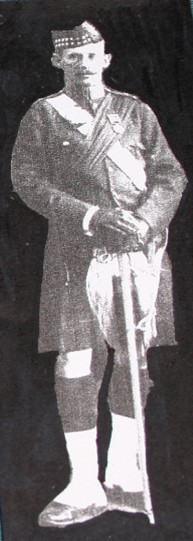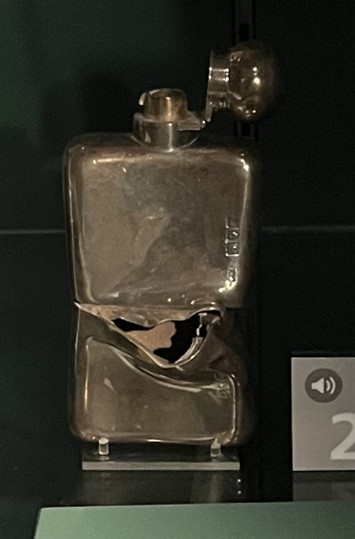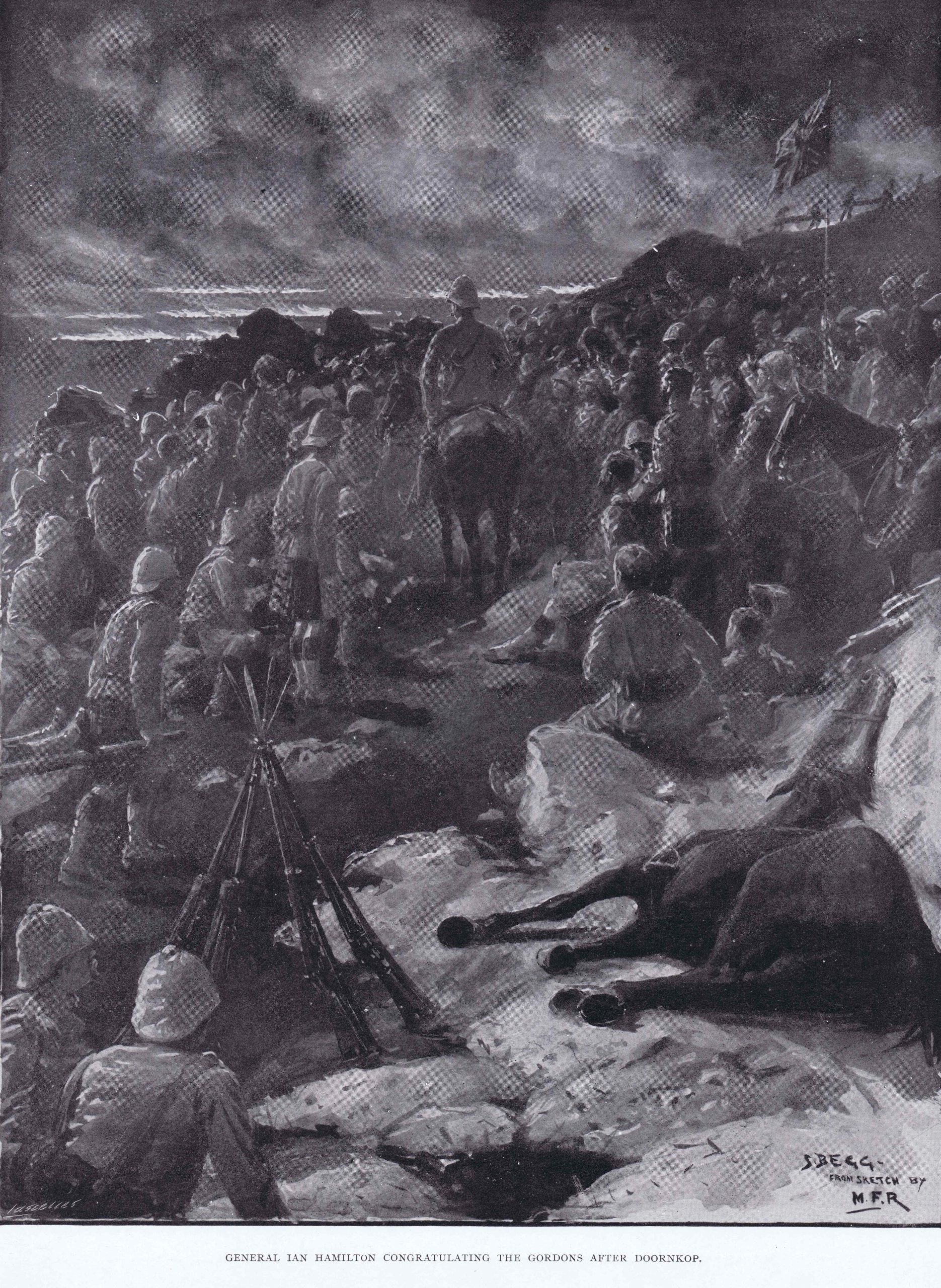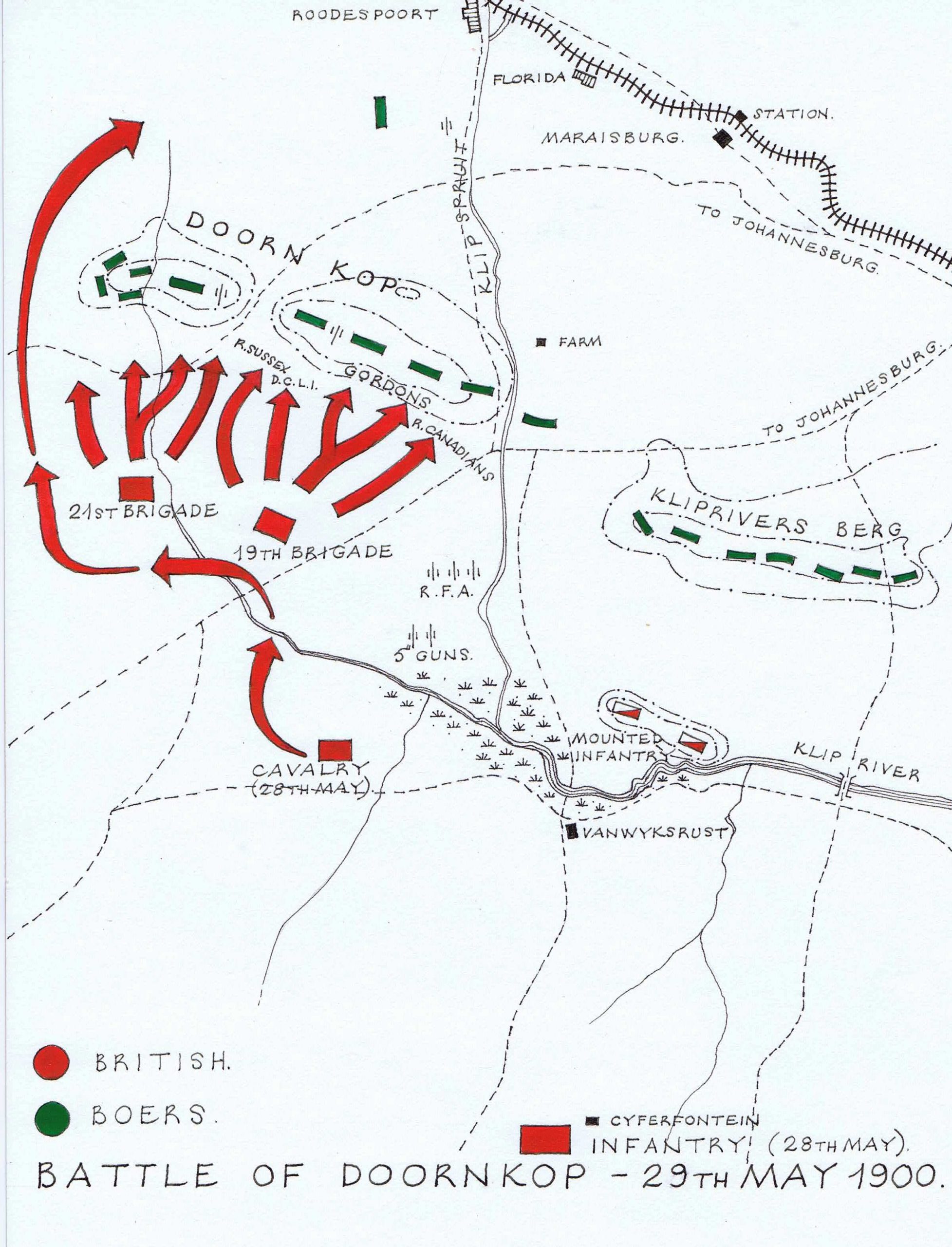Recently we welcomed Anna, a local student to the Museum to have a go at being an Assistant Curator for the week as part of a Schools Work Experience Project. As part of her volunteering she researched and wrote about one of the artefacts on display in the Museum Collection. Read her fascinating blog post to find out more…


Image: Photograph of Major George E. E. G. Cameron
Image: Silver hip flask which save Major Cameron’s life during the Battle of Doornkop.
Major G.E.E.G. Cameron’s Hip Flask
This silver hip flask played a significant role in a soldier’s outcome during the Battle of Doornkop on 29th May 1900. The Battle of Doornkop gained its name because the hill that the British were sent to attack the Boers on, in Johannesburg, was called Doornkop. The flask’s owner was a man by the name of Major George Cameron, who was from the 1st Battalion of the Gordon Highlanders.
The 1st Battalion’s orders were to advance within a thousand yards of the enemy troops, and if they encountered heavy fire, they were to stop and await further instructions. The leading company commanders had been told by their Commanding Officer (Lieutenant Colonel Forbes MacBean) that at this point he would make clear to them exactly what they were to do next. The British line then started to slowly move towards the enemy, waiting for MacBean to sound the ‘advance’. However, although MacBean wanted to do so, he could not find his bugler!
The leading troops were unsure what to do next, as they were meant to be given further orders after the bugle had sounded, informing them to advance. Thankfully, a runner had found the Commanding Officer’s bugler and told him to sound the alarm at that moment; even though this should have been done about twenty minutes earlier. The company commanders believed this signal to be their instruction to advance, and so they moved forward at a steady run directly into the firing Boers.
Amazingly the attack was successful, and the Gordon Highlanders received the utmost praise from Winston Churchill himself! He stated, ‘There is no doubt that they are the finest Regiment in the world.’

Image: General Ian Hamilton congratulating the Gordons after the Battle of Doornkop (1900).
One of the soldiers, Major George Cameron, came from a family of fine ‘military credentials’, and so with such a background, it is not surprising that he had such a distinguished military career. Previously he had served in the Egyptian Army, but had returned to his regiment in the Gordons as the Boer War erupted. Before going to fight in Johannesburg, his cousin had given him a silver brandy flask with the engravings ‘E.G.C from O.S.C’ written on it. This flask sat in his blouse side pocket during the battle, where a bullet was fired straight into the metal. This was the main reason why his wound was extremely serious. The bullet struck the heavy silver flask, and on passing through the metal, it had become misshapen causing a terrible wound. Unfortunately, if Major Cameron had not been carrying this flask during battle, then the bullet would have created a smaller wound, and would not have shattered his hip – which sadly is what happened. This injury ensured that Cameron would never totally recover. The aftermath of Doornkop showed that 100 Gordon Highlanders were lost within 10 minutes of the battle.
Major Cameron was very lucky to escape with his life. Later on that year, Cameron was awarded the title ‘Major’ as a reward for his gallantry. Cameron was invalided home to the United Kingdom after this, where he served for three years as Adjutant at the Royal Hospital in Chelsea, and he passed away just two years after on 27 August 1908, in Hampshire.




